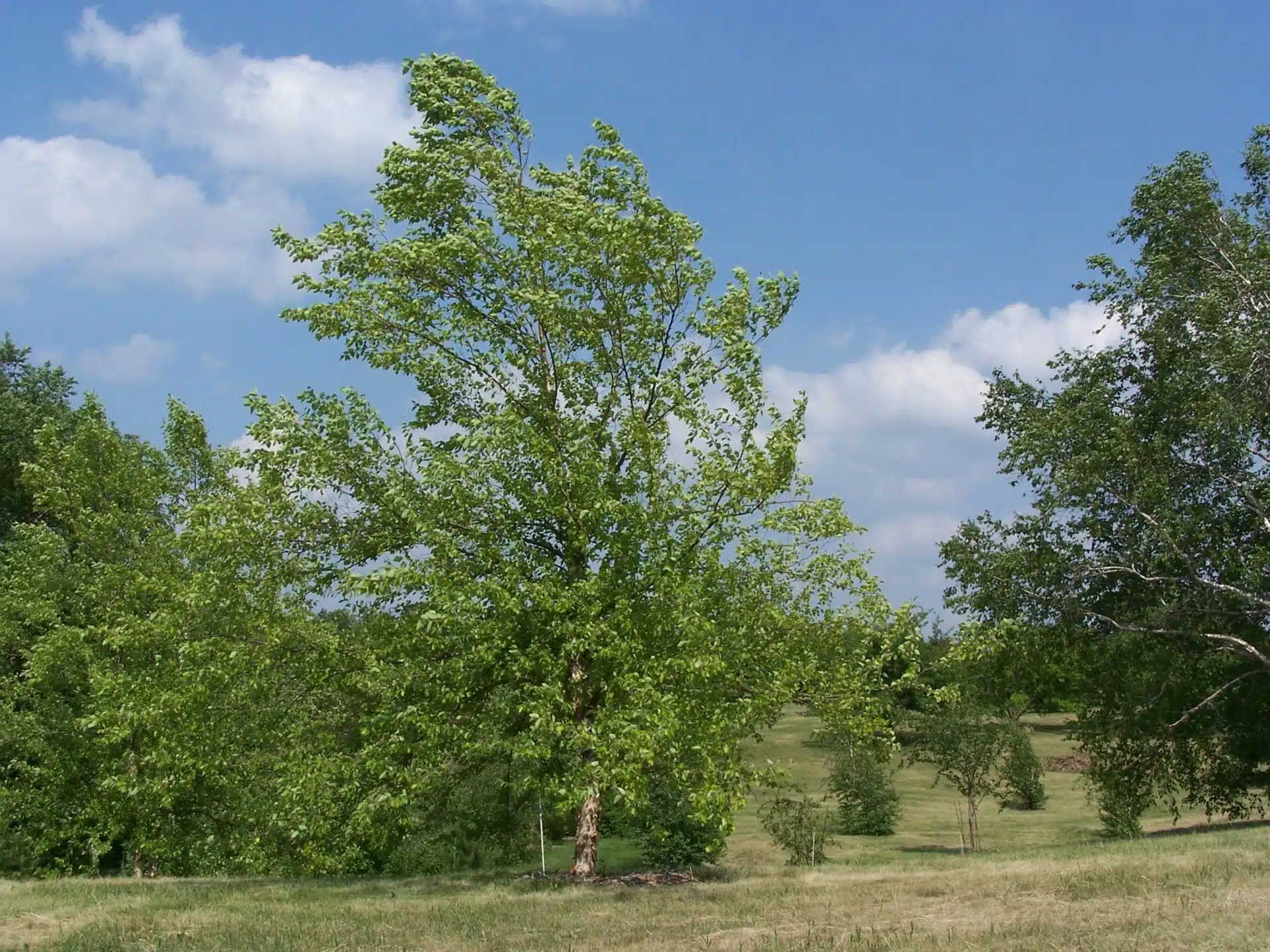Trees
River birch
Betula nigra

A tree that merits attention, river birch has a graceful habit with arching slender branches and attractively peeling young bark. Betula nigra is native to Ohio, but can be found in the southeastern states, primarily along streams, but also by ponds and wetland habitats. It grows as far south as Florida and eastern Texas, and it range extends north into the Mississippi River watershed to Wisconsin and southern Minnesota. Populations can also be found along the Hudson River in southern New York, as well as in eastern Massachusetts and southern New Hampshire.
In the landscape, river birch is planted both as a single-trunked tree and multi-trunked specimen. Although the multiple-trunked trees do display more attractive bark in a smaller area, they are decidedly less structurally sound and more prone to have trunks break during storms. At The Holden Arboretum there are 80 river birches including cultivated varieties. ‘Heritage’ was selected by Earl Cully of Illinois for showy bark; ‘Dura-Heat’ is reportedly from a northern Florida seed source; ‘Summer Cascade’, selected by North Carolina nurserymen, has a weeping growth habit; ‘Graceful Arms’, selected in Wisconsin, has a semi-weeping, broad-spreading habit. All are in the Display Garden.
River birches increase in height from 1.5 – 2 or as much as 2.5 feet per year during their first 20 years or so. Betula nigra ‘Summer Cascade’ by the west side of Lotus Pond measured 12’ tall by 7’ wide eight years after being having been trained to that height from a 5” rooted cutting. Betula nigra ‘Fox Valley’ has a growth rate of about 8” per year and ‘Tecumseh Compact’ is a slower growing shrub-like selection. Both may be found between the first two parking lots by the Corning Visitor Center. A river birch southwest of Corning Lake measured 60’ x 58’ after 56 years from seed received from the Morton Arboretum near Chicago. Mature trees such as this one have less attractive trunks displaying none of the buff and cinnamon hues that make the young ones so appealing.
Betula nigra is the only species of birch to shed its seed in spring, in early June at Holden. Pollen is commonly shed between mid and late April, but in the unusually warm spring of 2012 our trees started flowering on March 27. Unfortunately, the pollen of birches and other members of the birch family, Betulaceae, is a significant contributor to allergies. River birch grown from seed at Holden has begun flowering and fruiting at about 15 years. Leaves expand in May but in 2012 started to emerge from bud on April 20. In October fall color is yellow, but not particularly bright like many other species of birch.
The showy white-barked species of birch, when subject to drought, produce a substance that attracts the native bronze birch borer, but river birch is not susceptible to this deadly pest. At Holden, the mortality rate for river birch has been one in 10, but for the white-barked birches, about four out of five have died. Betula nigra transplants easily in spring or fall and has a fibrous shallow wide-spreading root system that is adaptable to most soils including fine textured clay. It can grow in extremely acidic soils, even in mine spoils, but in alkaline conditions the leaves will become chlorotic (yellowish due to a shortage of chlorophyll). During drought, river birch commonly shed interior leaves. During the summer of 1991, the birches lost up to two-thirds of their foliage.
Most Eastern North American bottomland trees cast dense shade, but river birch does not and is therefore a particularly good companion for a number of shrubs, ground covers, herbaceous perennials, bulbs and wildflowers. Witness the river birches in the Arlene and Arthur S. Holden Jr. Butterfly Garden, on the west side of Blueberry Pond, in the Myrtle S. Holden Wildflower Garden and in the valley garden at Lantern Court.
Photo Credit: SEWilco, CC BY-SA 3.0 <http://creativecommons.org/licenses/by-sa/3.0/>, via Wikimedia Commons




